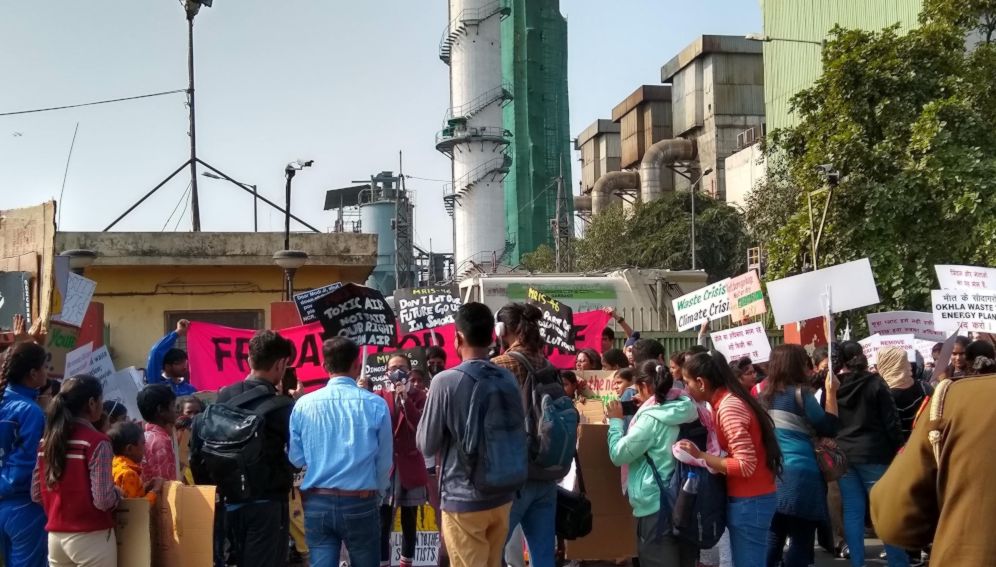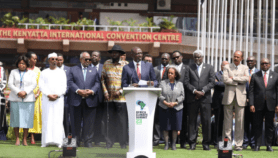By: Ranjit Devraj
Send to a friend
The details you provide on this page will not be used to send unsolicited email, and will not be sold to a 3rd party. See privacy policy.
[NEW DELHI] As waste-to-energy incinerators — a mainstay of garbage disposal in economically advanced countries — find their way into the developing countries of the Asia Pacific, questions are being asked about their suitability for the region.
In December 2022, the Maldives legislated to open the remote, Indian Ocean archipelago, which is threatened by rising sea levels, to incineration technology to manage its local waste and possible waste importation.
The Asian Development Bank, which supports waste incineration projects across the region, says the Maldives project will be designed to “reduce disaster risk and improve climate change resilience while creating a cleaner environment and decreasing greenhouse gas emissions”.
But the experience with waste-to-energy plants has been mixed.
For a start, waste as a fuel can be more polluting than even the dirtiest feedstocks such as coal, gas or oil.
To stem pollution, plants need to install adequate filters to comply with high emission standards to ensure that toxic gases do not escape into the air. There needs to be tight and constant monitoring to protect the environment.
In many developing countries in the region there is little confidence around this happening, given their poor environmental track record.
In the high-income countries of the colder northern hemisphere, such as Denmark, Germany, Japan, South Korea and Sweden, waste-to-energy plants produce electricity and hot water for district heating and steam for industrial use. This works well in those countries because they start out with segregated waste that has high calorific value.
However, many lower-income countries in the Asia Pacific do not have proper waste segregation.
Plastics are an important component of the waste fed into incinerators. Plastics generate the high temperatures needed to drive the turbines to produce electricity. However, burning plastic is also a major source of dioxin emissions, rated among the most toxic of substances and a known human carcinogen.
Interestingly, the world’s leading plastic waste exporters include Japan which is also a major developer of waste-to-energy plants in the region.
China used to buy a significant portion of the global plastic waste to incinerate until 2018 when it imposed a ban on imports, forcing exporting countries to search for new markets. Like Japan, China is now emerging as a major supplier of funds, technology and equipment for waste incineration in the Asia Pacific.
With funds and technology available, incineration is gaining acceptance in many Asia Pacific countries, the Maldives among the latest.
Thailand has waste burners in Bangkok and Phuket and has plans to build 79 more. Indonesia, plagued by plastic waste clogging its rivers and drains, has incinerators in Jakarta and Surabaya, plus ten more in the pipeline. In the Philippines, there are 13 incinerator projects, six of them operational.
Governments in Asia Pacific countries are promoting waste-to-energy plants following the lead of India where the mass-burning of mixed waste with high organic content and plastic in so-called “moving grate” incinerators have become the norm. These produce large volumes of toxic smoke and ash, which need to be filtered out and disposed of.
India’s experiments with waste incineration go back to 1987 when a plant using advanced Danish technology came up in Delhi. But that plant failed within a week thanks to the city having no provision to segregate waste, a prerequisite for waste to energy plants.
With segregation unenforceable, India shifted to direct incineration of mixed waste using moving grate technology, which requires costly filters to take care of dioxins and other harmful pollutants.
Monitoring emissions
Grate incinerators are cheap to build and operate and capable of dealing with the unsegregated waste typically found in developing countries. Between 2003 and 2020 around 200 grate incinerators were built around the world.
Delhi now burns 7,000 tonnes of mixed waste per day in four incinerators and is building a fifth, although the plants add to the severe air pollution woes in the capital.
Grate incinerator projects in the Philippines can be seen in a 36-megawatt Dutch-aided project in Cebu and a 19-megawatt plant UK-backed plant at Pangasinan. A Danish-aided, 15–17-megawatt plant coming up at Semarang, Indonesia and an 8.7-megawatt plant being built at Chonburi, Thailand by French entities also use similar technology.
If moving grate waste-to-energy plants are to be sustainable they must, as in Singapore, enforce stringent emission monitoring. Plus, they are using sophisticated electrostatic precipitators and filters to remove pollutants from emissions released through tall chimneys.
Cleaner technologies that burn unsegregated waste, like gasification and fluidised bed incineration, are available but require greater capital investment.
Sending plastic waste along with dirty moving grate technology to developing countries is to simply, cheaply export the problem. It is an invitation to environmental and public health problems in receiving countries that lack the necessary monitoring and regulatory mechanisms.
If the European Union and the OECD are pursuing the circular economy, so too can the developing countries of the Asia Pacific. After all, they have an early start on the “reuse, recycle, reduce” concept instead of getting locked into linear waste incineration models, which are unsustainable.
This piece was produced by SciDev.Net’s Asia & Pacific desk.














